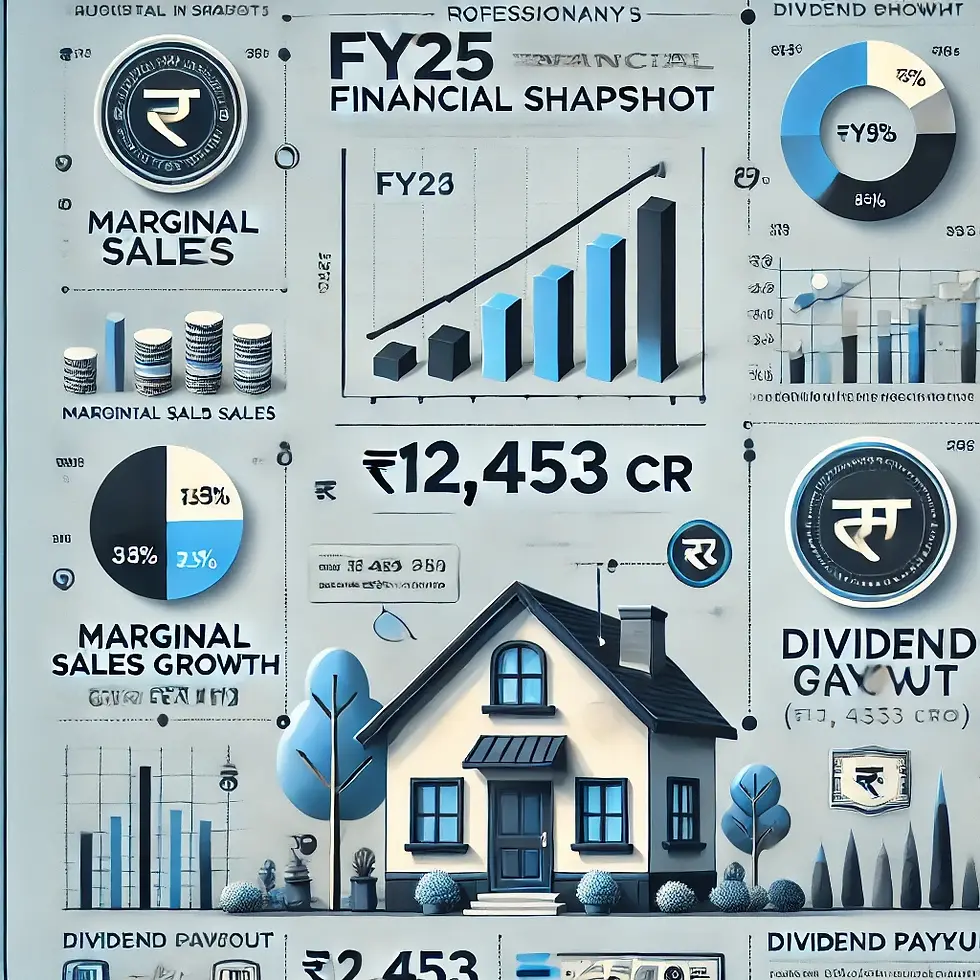Q4 FY25 Highlights: Net Profit Dip Despite Revenue Rise, Margins Under Pressure
- nvshah0610
- Jul 29
- 2 min read

In the fourth quarter of FY25, Hindustan Unilever (HUL) reported a mixed financial performance, reflecting a challenging business environment. The company’s total revenue for the quarter rose modestly to approximately ₹15,979 crore, driven by slight improvements in sales volumes and product mix. However, despite this revenue uptick, net profit declined by around 3.7 percent year-on-year to ₹2,464 crore. This drop in profitability was attributed largely to sustained cost pressures and a slowdown in discretionary spending in urban markets.
The impact of inflation on raw materials continued to be a major concern. Key inputs such as palm oil, tea, and coffee remained volatile and expensive during the quarter, affecting margins across several product categories. While HUL attempted to offset these costs through selective price increases and operational efficiencies, it wasn’t enough to maintain previous margin levels. As a result, the company's EBITDA margin for Q4 FY25 slipped to 23.1 percent, down by 30 basis points compared to the same period last year.
In terms of segment performance, personal care and food categories saw modest growth, while the home care division continued to deliver steady results. The company’s rural sales showed early signs of recovery, but urban demand remained subdued, especially in discretionary segments such as beauty and premium skincare. The subdued volume growth, combined with the margin pressure, signaled a cautious consumer sentiment, particularly in urban areas still adjusting to inflationary pressures.
To reward shareholders, HUL’s board declared a final dividend of ₹24 per share, bringing the total dividend for FY25 to ₹53 per share. This continued focus on shareholder returns underscored the company’s strong cash flow position, even amid short-term profit pressures. Looking ahead, HUL’s management expressed confidence in their long-term strategy, emphasizing innovation, premiumisation, and cost efficiency as levers to navigate the ongoing macroeconomic uncertainty. Sources:StandardExpress





Comments